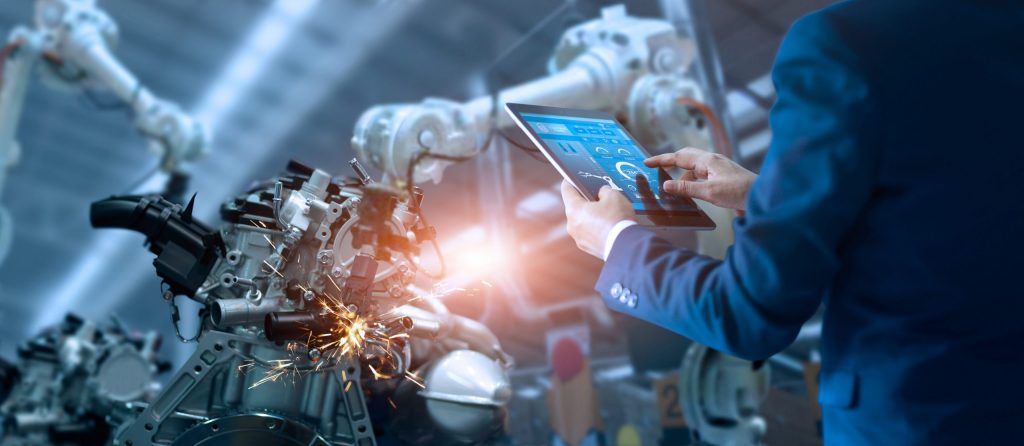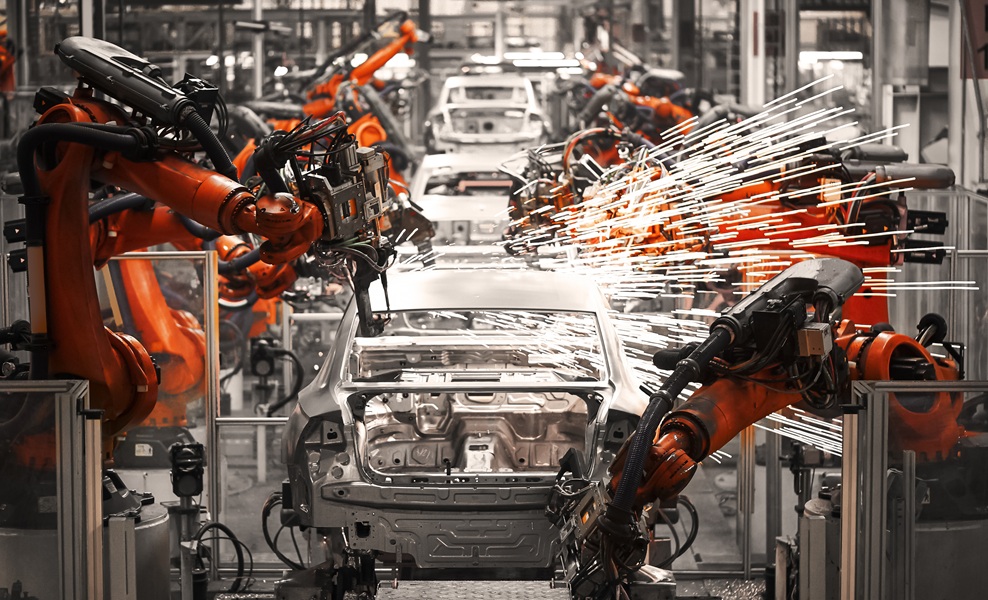Artificial intelligence is transforming manufacturing, with quality control, cybersecurity and process optimisation just the beginning. In this discussion with Rockwell Automation, Mark Venables discovers how AI can drive autonomous operations and bring production capabilities to regions previously unfeasible for manufacturing.
Quality control, cybersecurity, and process optimisation are just the beginning regarding AI’s impact on manufacturing. Manufacturers today are embracing these applications, but the transformative potential of artificial intelligence extends much further. It can create autonomous operations and even bring production capabilities to previously considered unfeasible manufacturing regions. The challenge now lies in how to move forward. What will manufacturers truly need to unlock the transformative power of AI?
Embedding AI into automation systems
Artificial intelligence is already reshaping how Rockwell Automation designs, operates and maintains its systems. The approach, however, is not to develop AI as a standalone product. Instead, Rockwell has embedded AI capabilities into every part of its core portfolio. “We see AI as an opportunity to enhance each of our existing product areas,” Jordan Reynolds, Vice President, Artificial Intelligence & Autonomy at Rockwell Automation, says. “It is about rethinking these systems now that we can leverage the ability to learn from data, generate instructions, optimise decision-making, and adapt.”
This philosophy has led to AI integration across five key areas – design tools, core automation systems, operations management, logistics, and maintenance. For example, in design tools, AI can generate programmable logic controller (PLC) code logic, simulate various scenarios, and produce instructions that engineers can deploy directly to the factory floor. “Generative AI capabilities allow users to provide instructions in natural language, and then it automatically generates the programming, unit tests, comments, and even validates the logic,” Reynolds notes. The result? A significant increase in system design efficiency.
Rockwell’s integration of AI within its simulation tools, such as Emulate3D, takes it one step further. Even without historical data, a typical challenge in greenfield production facilities, these tools can simulate the manufacturing environment, providing a training ground for AI agents to learn autonomously. “This simulated learning environment creates an AI-native production facility right from the start, enabling manufacturers to move forward confidently, without waiting years to collect historical data,” Reynolds explains.
Revolutionising sensing and control
The ability to sense and control operations is fundamental in the manufacturing environment, and AI is also making its mark here. AI-driven sensing and control mechanisms are helping Rockwell move away from traditional, physical sensors and towards predictive models that infer necessary measurements. According to Reynolds, the company’s new vision system, FactoryTalk Analytics VisionAI, launching at the Automation Fair, reflects this transformation: “These systems allow us to infer product quality through machine learning rather than manually programmed rules,” he says.
Quality control in manufacturing is evolving, and AI is pushing this evolution further than ever before. “Rather than specifying rules for every possible defect, Rockwell’s AI-driven vision systems can simply learn what a good product looks like and detect deviations,” Reynolds continues. “The key feature is that it learns from historical data. There is no need for engineers to define every rule; instead, they learn from examples of what is good and bad, making quality inspections much simpler and more effective.”
Control systems are also being enhanced through machine learning capabilities embedded directly in Rockwell’s PLCs. “With LogixAI, we can add machine learning capabilities directly to any ControlLogix PLC,” Reynolds explains. “This enables the controller to dynamically adapt, learn, and optimise control approaches. For more complex, multi-variable environments, like chemical refineries, Rockwell leverages Pavilion, a product that uses neural networks to model and optimise processes in real time. It is one of our earliest AI products, and we continue to enhance its capabilities with modern AI methodologies.”
Optimising operations management with AI
AI integration is just as transformative in the operations management domain, where the emphasis is on planning, scheduling, and resource allocation. According to Reynolds, Rockwell’s MES platforms, such as Plex and Production Center, have AI built into their DNA to solve one of the most challenging aspects of operations management: finding optimal solutions. “Typically, operations staff are limited to finding feasible solutions,” Reynolds points out, “whereas AI can help find optimal ones.”
The difference between feasible and optimal solutions is not insignificant. Small scheduling and resource allocation improvements can add to significant gains in productivity and efficiency. AI capabilities within MES platforms mean that they can recommend optimal schedules automatically, often substantially increasing throughput and yield. Reynolds highlighted the importance of this aspect, noting that “a ten percent increase in throughput can be achieved simply by optimising the production schedule.”
Emulate3D also plays a significant role in operations management, particularly during commissioning. “Complex manufacturing lines need to be commissioned correctly to minimise disruption and maximise output,” Reynolds continues. “Emulate3D enables detailed scenario analysis of routing, line balancing, and resource allocation strategies. By integrating optimisation tools into our simulation capabilities, we can develop the best possible configurations that lead to the greatest possible throughput.”
Maintenance as a competitive advantage
Predictive maintenance is a well-established use case for AI in manufacturing, but Rockwell is taking it further. The company’s Guardian AI integrates anomaly detection capabilities into equipment with built-in sensors, such as motor current sensors in variable frequency drives (VFDs). “This removes the need for additional sensors while enabling predictive maintenance,” Reynolds continues. “We realised that we could tap into the existing motor current sensors and apply anomaly detection algorithms. If a drive is powering a pump, we can determine whether the pump is operating normally or abnormally and identify the most likely cause of any anomaly.”
Such capabilities mean manufacturers do not need to install thousands of additional sensors across their facilities to start a predictive maintenance journey. Instead, they can leverage existing equipment, significantly reducing costs while improving reliability. “That is the concept behind Guardian AI,” Reynolds says. “Any of our intelligent devices, whether it is VFDs, motion control systems, or conveyance technology, will have Guardian AI integrated, providing asset condition analysis without needing a third-party predictive maintenance platform.”
The value of predictive maintenance becomes even more significant when tied into the overall maintenance management system. Guardian AI integrates seamlessly with Rockwell’s Fix platform, triggering the maintenance process automatically when anomalies are detected. “If an asset condition issue is detected, the system automatically determines the right procedure to remediate the problem, whether it is scheduling preventative maintenance or identifying spare materials,” Reynolds explains.
Navigating the AI transformation journey
The journey towards AI-enabled manufacturing operations is not without its challenges. Manufacturers must consider how and where to deploy AI, whether in the cloud, at the edge, or directly within a physical device. “Rockwell’s approach involves a combination of these options, depending on the specific application,” Reynolds adds. “Machine learning often involves complex training processes, and we use the cloud for that. But once models are trained, inference typically needs to be done locally, either within the controller or in an edge device.”
This local deployment ensures low latency, which is crucial for automation and control applications. “Inference is much less computationally intensive than training, but for it to be effective, it must happen as close to the edge as possible,” Reynolds says. “Rockwell has developed solutions such as Optix and Logix Edge to support edge computing needs, providing a flexible AI deployment strategy that can meet manufacturing environments’ latency and reliability requirements.”
While there are costs associated with adding AI capabilities, Reynolds emphasised that many features are included as part of existing products at no extra charge. “Some features are simply enhancements to the existing product, while others come with an incremental cost, typically as an annual recurring software licence fee,” he notes. “This pricing strategy provides manufacturers with flexibility in choosing the capabilities that best meet their needs without requiring significant upfront investment.”
The AI-enabled future of manufacturing is a journey, and it promises to reshape how we think about production, efficiency, and operations. The message is clear for manufacturers ready to take the leap: start where you can, leverage what you have, and keep pushing towards greater autonomy and intelligence. “We are just reimagining all of these fundamental areas and thinking about ways to improve their performance through machine learning and generative AI,” Reynolds concludes. “It is a continuous effort, a journey of improvement that will ultimately change the game for manufacturing.”






